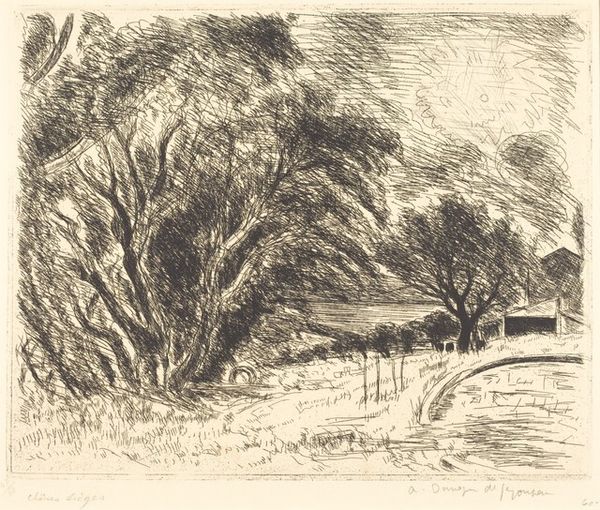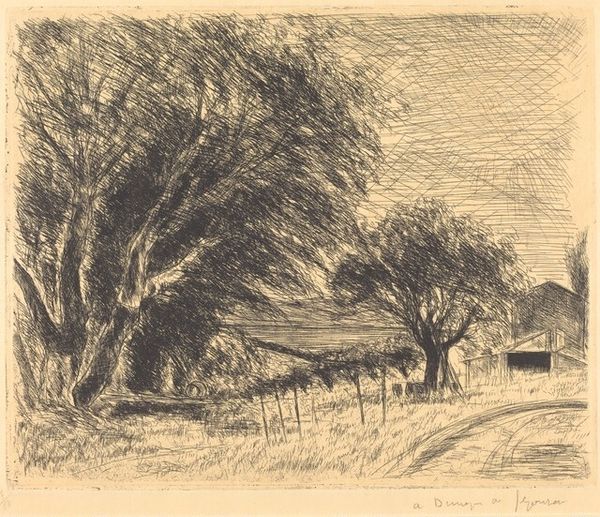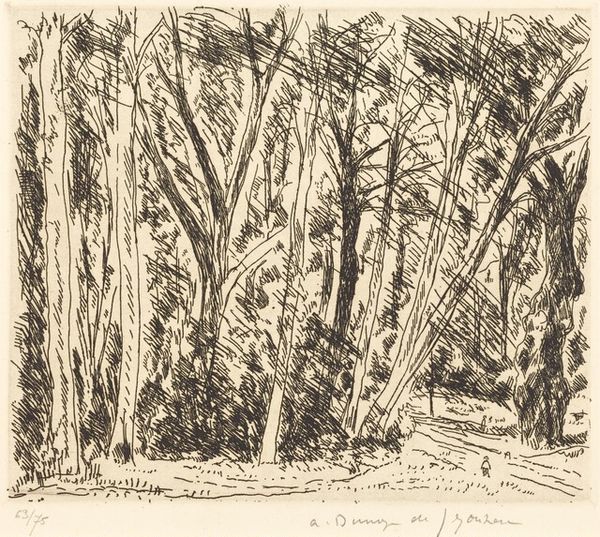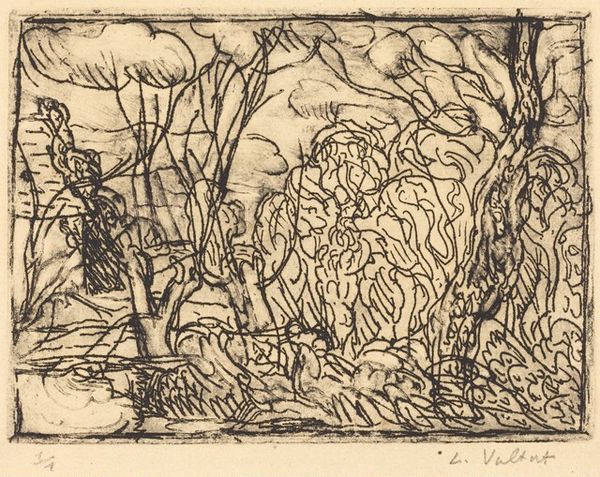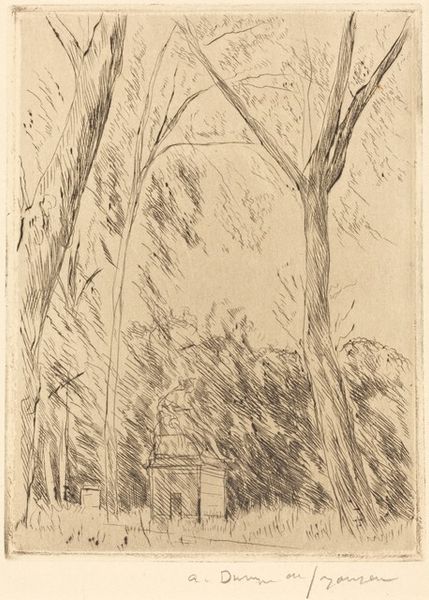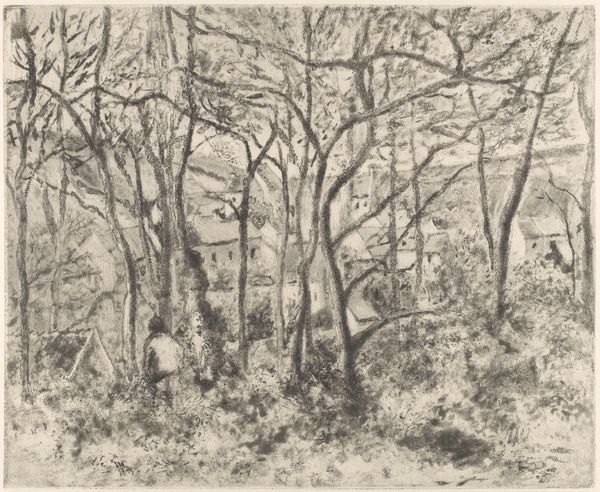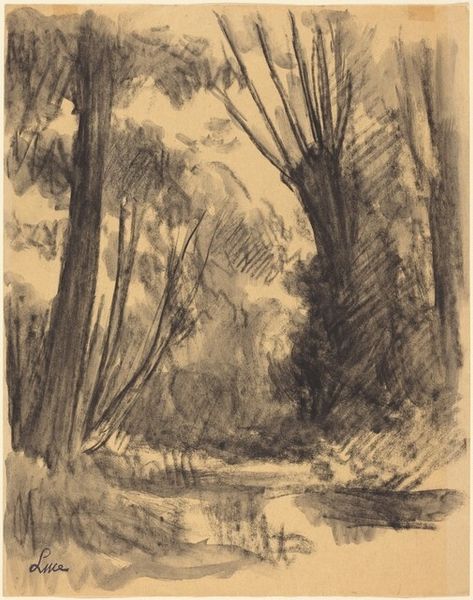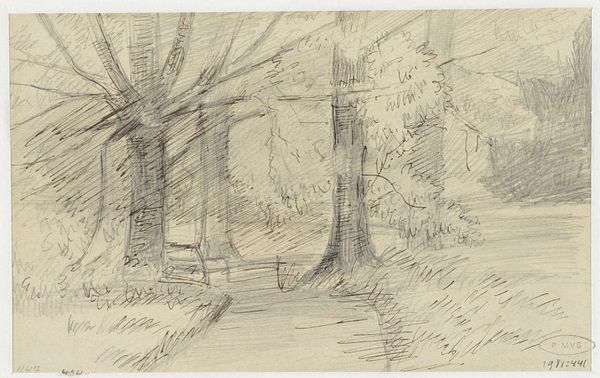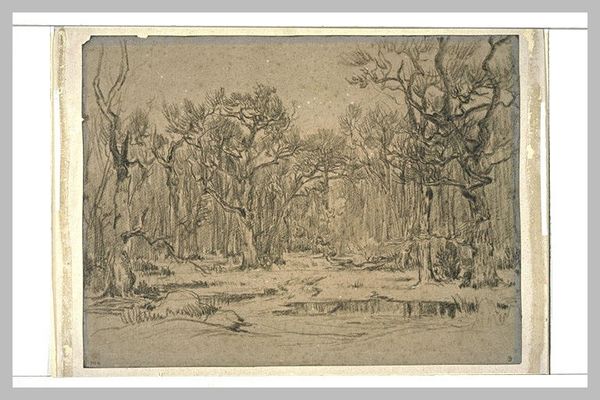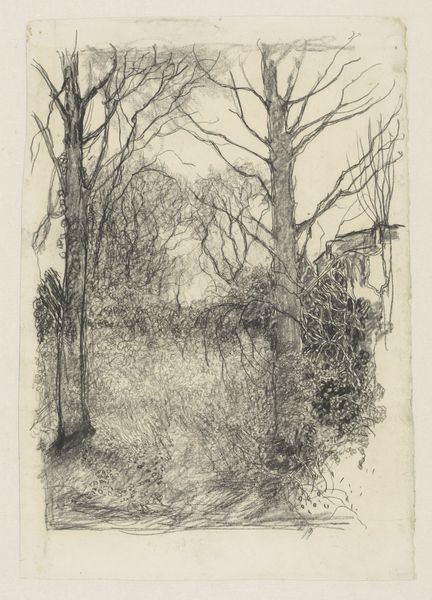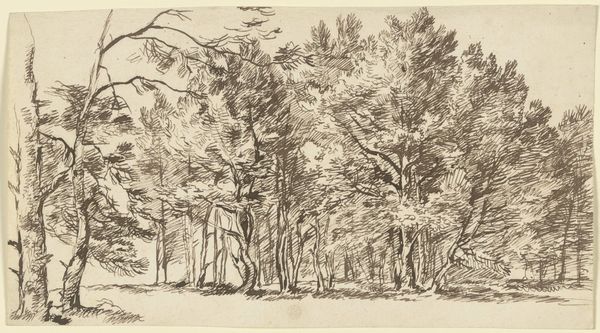
The Great Oak at Chaville (Le gros chene a Chaville) 1924
0:00
0:00
drawing, print, etching, ink
#
drawing
# print
#
etching
#
landscape
#
ink
#
geometric
#
line
#
realism
Copyright: National Gallery of Art: CC0 1.0
Editor: Here we have André Dunoyer de Segonzac's etching, "The Great Oak at Chaville" from 1924. The composition, rendered in a stark black ink, feels dense, almost claustrophobic. What do you see in this piece, looking at it from a different perspective? Curator: This isn't just a picturesque scene; it's a glimpse into the early 20th century's shifting relationship with nature, and to issues surrounding environmentalism. Segonzac’s intense line work creates a feeling of enclosure, the forest pressing in. Consider the date – 1924. Post World War I, Europe was grappling with industrialization’s impact. Does the way Segonzac portrays nature feel celebratory or cautionary to you? Editor: I hadn't thought about the historical context. It does feel a bit… ominous. Is it suggesting that nature is threatened, or is it celebrating the oak's resilience despite everything? Curator: It’s both, I think. The "great oak" endures, yes, but is increasingly framed as separate from human activity. We are relegated to the road that cuts through. Where the figures once were more enmeshed in their setting, the tree's monumental form suggests a natural world that may resist attempts at domination but perhaps needs our protection. Can we draw a comparison to contemporary attitudes about ecological conservation when looking at it in today’s context? Editor: That’s a great way to view it. It's much more than just a landscape study; it becomes a commentary on our place within nature. Curator: Exactly. By examining the intersection of art, history, and social consciousness, this seemingly simple landscape unveils complex ideas about humanity's evolving role in the natural world. Editor: Thank you for pointing that out. I can see how historical and philosophical approaches bring a deeper awareness to the piece.
Comments
No comments
Be the first to comment and join the conversation on the ultimate creative platform.
